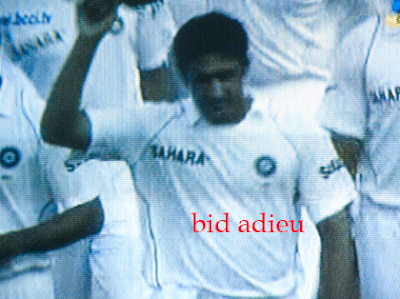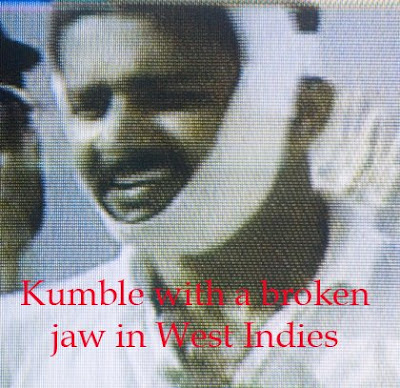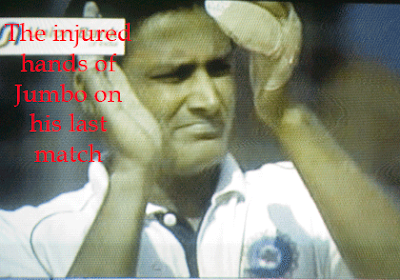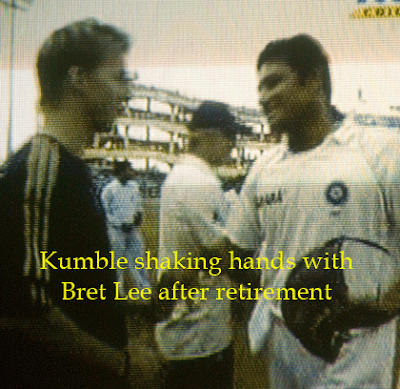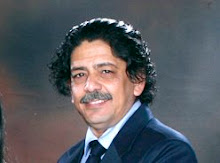 6
comments
|
Tuesday, November 18, 2008
6
comments
|
Tuesday, November 18, 2008
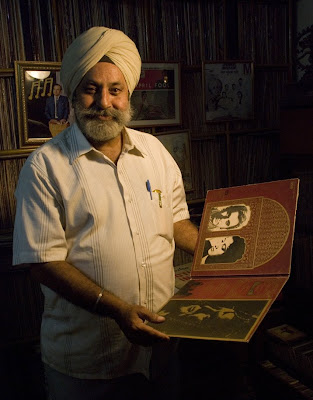 This post may look like a sequel to one of my earlier posts "For Records' Sake". But in all earnest, it is not. Mr. Lakhwant Singh an engineer by profession and in the business of building bodies for buses, saw the post that I had done for Shah Music Centre. He called me up one day and asked if I could come over to his place as he had something similar to show to me, that I had done for the Shahs. Like the Shahs, Lakhwant Singh too is a collector of vinyl records of the yesteryears. But the similarity ends there. Unlike Shahs - who have been into collecting records for three generations and are into the business in a hardcore way - Lakhwant Singh does it purely for the passion and pleasure of it. It all started during his hostel days at Pant University,where he was pursuing a degree in engineering. He bought his first 78 rpm record of 'Udan Khatola' to listen to the song 'Na Toofan Se Khelo Na Saahil Se Khelo, Mere Paas Aao Mere Dil Se Khelo'. He shelled out two-and-a-half rupees for it solely for the listening pleasure. Hardly did he imagine at that time that collecting records would become a passion for him. While other fellow students were collecting stamps and coins as a hobby, Lakhwant gradually developed the hobby of collecting records. Today, after five decades, Lakhwant has almost all the hindi film and non film records released so far. Apart from Hindi numbers, Lakhwant has a huge collection of old Punjabi records too.
This post may look like a sequel to one of my earlier posts "For Records' Sake". But in all earnest, it is not. Mr. Lakhwant Singh an engineer by profession and in the business of building bodies for buses, saw the post that I had done for Shah Music Centre. He called me up one day and asked if I could come over to his place as he had something similar to show to me, that I had done for the Shahs. Like the Shahs, Lakhwant Singh too is a collector of vinyl records of the yesteryears. But the similarity ends there. Unlike Shahs - who have been into collecting records for three generations and are into the business in a hardcore way - Lakhwant Singh does it purely for the passion and pleasure of it. It all started during his hostel days at Pant University,where he was pursuing a degree in engineering. He bought his first 78 rpm record of 'Udan Khatola' to listen to the song 'Na Toofan Se Khelo Na Saahil Se Khelo, Mere Paas Aao Mere Dil Se Khelo'. He shelled out two-and-a-half rupees for it solely for the listening pleasure. Hardly did he imagine at that time that collecting records would become a passion for him. While other fellow students were collecting stamps and coins as a hobby, Lakhwant gradually developed the hobby of collecting records. Today, after five decades, Lakhwant has almost all the hindi film and non film records released so far. Apart from Hindi numbers, Lakhwant has a huge collection of old Punjabi records too.
An ardent music lover Lakhwant swears by the quality of sound of vinyl. According to him, vinyl records might have long ago vanished from the shelves of music shops throughout the world, surpassed in quality and convenience by cassettes and compact discs. As older recordings are transferred onto the newer mediums, one might think that progress has plied its logical course. But lost in the grooves of those unwieldy wax discs is the treasure trove of valuable heritage. This seemingly inevitable march toward the digital future has prompted a widespread  misunderstanding; while digital media is undeniably more convenient than its analog equivalent,it is by no mans guaranteed to be superior. And there's no better example of this than the vinyl record. This 'dead' technology offers the potential for sound quality that's far superior to what one hears from
misunderstanding; while digital media is undeniably more convenient than its analog equivalent,it is by no mans guaranteed to be superior. And there's no better example of this than the vinyl record. This 'dead' technology offers the potential for sound quality that's far superior to what one hears from  a CD or MP3 players, so much so that the joys of vinyl are being redicovered by a new generation of music fans. Had this not been the case, Yash Chopra, in this era of digital sound, would not have come out with the vinyl version of the music of two of his great works, 'Dil to Pagal Hai' and 'Veer Zaara'.
a CD or MP3 players, so much so that the joys of vinyl are being redicovered by a new generation of music fans. Had this not been the case, Yash Chopra, in this era of digital sound, would not have come out with the vinyl version of the music of two of his great works, 'Dil to Pagal Hai' and 'Veer Zaara'.
There are times when you can feel and smell the music coming from the vinyl record, especially, if live musicians were playing at the time of the vinyl recording. (Like it was done when Lata Mangeshkar performed live at Albert Hall London in 1974 and Naushad had conducted the orchestra). It retains a retro appeal and a visceral aural aesthetic that an endless stream of bits and bytes will never be able to equal.
time of the vinyl recording. (Like it was done when Lata Mangeshkar performed live at Albert Hall London in 1974 and Naushad had conducted the orchestra). It retains a retro appeal and a visceral aural aesthetic that an endless stream of bits and bytes will never be able to equal.
Apart from being a music lover, Lakhwant is a historian and encyclopaedia of sort as far as trivia of anecdotes and events that had happened while making of various films and recording of various songs, is concerned. While playing a record on his old and favourite Garrard 301 turntable, he pleasurably narrates interesting incidents that took place while making of that film. For instance, while playing a record of 'Sholay' he told about a track of Qawwali which was recorded for the film but was chopped off as the film had already become too lengthy. Lakhwant Singh then played that eight minute track which was sung by Kishore Kumar, Bhupender, Manna Dey and Anand Bakshi (the famous song writer who also wrote songs for Sholay). The Qawwali, "Chaand sa Koi Chhehra na Pehloo Mein Ho, To Chaandni ka Mazaa Nahin Aata, Jaam Peekar Sharaabi Na Gir Jaaye to Maikashi Ka Mazaa Nahin Aata", was picturised at Soorma Bhopali's shop.
Lakhwant Singh then played that eight minute track which was sung by Kishore Kumar, Bhupender, Manna Dey and Anand Bakshi (the famous song writer who also wrote songs for Sholay). The Qawwali, "Chaand sa Koi Chhehra na Pehloo Mein Ho, To Chaandni ka Mazaa Nahin Aata, Jaam Peekar Sharaabi Na Gir Jaaye to Maikashi Ka Mazaa Nahin Aata", was picturised at Soorma Bhopali's shop.
(CLICK HERE FOR SOME MORE IMAGES AND TRIVIA)
Old English records also are a part of his vast library. He proudly displays a rare collection of a set of thirteen LPs of Beatles' records, which were released in a hard bound pack with the signatures of the Fab Four - John Lenon, Paul McCartney, George Harrison and Ringo Starr (Richard Starkey) - on the pack. It's a rare piece of collector's item, nearly impossible to find.
his vast library. He proudly displays a rare collection of a set of thirteen LPs of Beatles' records, which were released in a hard bound pack with the signatures of the Fab Four - John Lenon, Paul McCartney, George Harrison and Ringo Starr (Richard Starkey) - on the pack. It's a rare piece of collector's item, nearly impossible to find.

Andy Williams, Billy Joel, Cliff Richard, Micheal Jackson and many more pop stars' of 50s and 60s add to the collection of Lakhwnat Singh's treasure trove.
Among these is one particular record of Cliff Richard - CLIFF RICHARD AND THE SHADOWS - a rare red coloured vinyl 12-track Odeon label stereo LP made in Japan, complete with near impossible to find 3/4 length 'hankake obi strip' - A stunning addition to any Cliff collection.
particular record of Cliff Richard - CLIFF RICHARD AND THE SHADOWS - a rare red coloured vinyl 12-track Odeon label stereo LP made in Japan, complete with near impossible to find 3/4 length 'hankake obi strip' - A stunning addition to any Cliff collection.
Apart from the Hindi, Punjabi and English records, Lakhwant has a huge collection of Pakistani films and non-films records. Ranging from the rendition old and all time stalwarts like Mallika Pukhraj, Mehdi Hasan and Sabri Brothers to the not so old Mussarat and Munni Bai



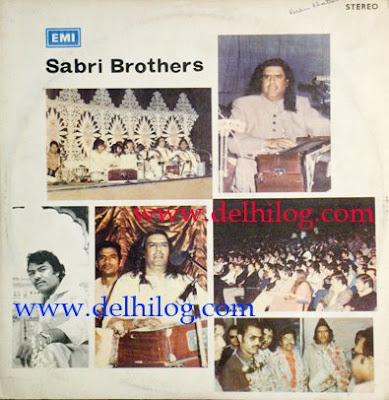


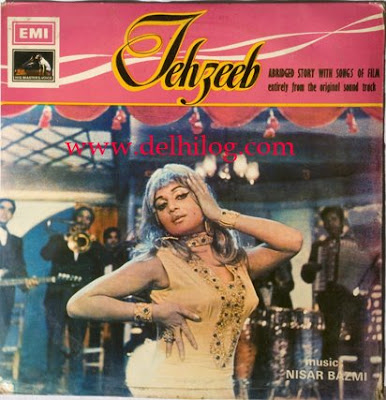
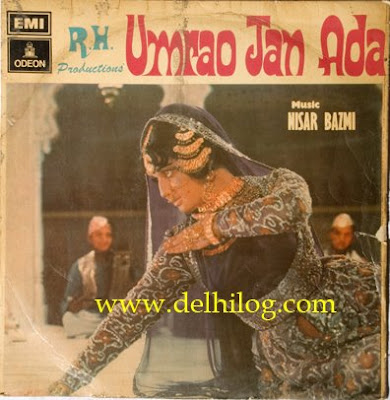
The glossy picture cover sleeve of Lakhwant's records remains in excellent condition with just minor creasing around the perimeter and a very slight ringwear impression on the covers (considering that some records are as old as forty years). The curved flipbacks are secure, there are no seam splits and distinctive pinched-edge spine is strong, with clearly legible print along the length. And to maintain all the collection of records, he is ably assisted by his disciple Gurmeet Singh and nephew Ramanjit Singh
minor creasing around the perimeter and a very slight ringwear impression on the covers (considering that some records are as old as forty years). The curved flipbacks are secure, there are no seam splits and distinctive pinched-edge spine is strong, with clearly legible print along the length. And to maintain all the collection of records, he is ably assisted by his disciple Gurmeet Singh and nephew Ramanjit Singh
(This post in no way is a comparison between the collections of Shah Music Centre and Lakhwant Singh. Shahs would always be 'SHAHS' as far as the collection of records is concerned. Lakhwant in his own esteem is passionate about the collection - Shahs are 'SHAHENSHAH' and 'SINGH IS KING' !
 misunderstanding; while digital media is undeniably more convenient than its analog equivalent,it is by no mans guaranteed to be superior. And there's no better example of this than the vinyl record. This 'dead' technology offers the potential for sound quality that's far superior to what one hears from
misunderstanding; while digital media is undeniably more convenient than its analog equivalent,it is by no mans guaranteed to be superior. And there's no better example of this than the vinyl record. This 'dead' technology offers the potential for sound quality that's far superior to what one hears from  a CD or MP3 players, so much so that the joys of vinyl are being redicovered by a new generation of music fans. Had this not been the case, Yash Chopra, in this era of digital sound, would not have come out with the vinyl version of the music of two of his great works, 'Dil to Pagal Hai' and 'Veer Zaara'.
a CD or MP3 players, so much so that the joys of vinyl are being redicovered by a new generation of music fans. Had this not been the case, Yash Chopra, in this era of digital sound, would not have come out with the vinyl version of the music of two of his great works, 'Dil to Pagal Hai' and 'Veer Zaara'.There are times when you can feel and smell the music coming from the vinyl record, especially, if live musicians were playing at the
 time of the vinyl recording. (Like it was done when Lata Mangeshkar performed live at Albert Hall London in 1974 and Naushad had conducted the orchestra). It retains a retro appeal and a visceral aural aesthetic that an endless stream of bits and bytes will never be able to equal.
time of the vinyl recording. (Like it was done when Lata Mangeshkar performed live at Albert Hall London in 1974 and Naushad had conducted the orchestra). It retains a retro appeal and a visceral aural aesthetic that an endless stream of bits and bytes will never be able to equal.Apart from being a music lover, Lakhwant is a historian and encyclopaedia of sort as far as trivia of anecdotes and events that had happened while making of various films and recording of various songs, is concerned. While playing a record on his old and favourite Garrard 301 turntable, he pleasurably narrates interesting incidents that took place while making of that film. For instance, while playing a record of 'Sholay' he told about a track of Qawwali which was recorded for the film but was chopped off as the film had already become too lengthy.
 Lakhwant Singh then played that eight minute track which was sung by Kishore Kumar, Bhupender, Manna Dey and Anand Bakshi (the famous song writer who also wrote songs for Sholay). The Qawwali, "Chaand sa Koi Chhehra na Pehloo Mein Ho, To Chaandni ka Mazaa Nahin Aata, Jaam Peekar Sharaabi Na Gir Jaaye to Maikashi Ka Mazaa Nahin Aata", was picturised at Soorma Bhopali's shop.
Lakhwant Singh then played that eight minute track which was sung by Kishore Kumar, Bhupender, Manna Dey and Anand Bakshi (the famous song writer who also wrote songs for Sholay). The Qawwali, "Chaand sa Koi Chhehra na Pehloo Mein Ho, To Chaandni ka Mazaa Nahin Aata, Jaam Peekar Sharaabi Na Gir Jaaye to Maikashi Ka Mazaa Nahin Aata", was picturised at Soorma Bhopali's shop.(CLICK HERE FOR SOME MORE IMAGES AND TRIVIA)
Old English records also are a part of
 his vast library. He proudly displays a rare collection of a set of thirteen LPs of Beatles' records, which were released in a hard bound pack with the signatures of the Fab Four - John Lenon, Paul McCartney, George Harrison and Ringo Starr (Richard Starkey) - on the pack. It's a rare piece of collector's item, nearly impossible to find.
his vast library. He proudly displays a rare collection of a set of thirteen LPs of Beatles' records, which were released in a hard bound pack with the signatures of the Fab Four - John Lenon, Paul McCartney, George Harrison and Ringo Starr (Richard Starkey) - on the pack. It's a rare piece of collector's item, nearly impossible to find.
Andy Williams, Billy Joel, Cliff Richard, Micheal Jackson and many more pop stars' of 50s and 60s add to the collection of Lakhwnat Singh's treasure trove.
Among these is one
 particular record of Cliff Richard - CLIFF RICHARD AND THE SHADOWS - a rare red coloured vinyl 12-track Odeon label stereo LP made in Japan, complete with near impossible to find 3/4 length 'hankake obi strip' - A stunning addition to any Cliff collection.
particular record of Cliff Richard - CLIFF RICHARD AND THE SHADOWS - a rare red coloured vinyl 12-track Odeon label stereo LP made in Japan, complete with near impossible to find 3/4 length 'hankake obi strip' - A stunning addition to any Cliff collection.Apart from the Hindi, Punjabi and English records, Lakhwant has a huge collection of Pakistani films and non-films records. Ranging from the rendition old and all time stalwarts like Mallika Pukhraj, Mehdi Hasan and Sabri Brothers to the not so old Mussarat and Munni Bai








The glossy picture cover sleeve of Lakhwant's records remains in excellent condition with just
 minor creasing around the perimeter and a very slight ringwear impression on the covers (considering that some records are as old as forty years). The curved flipbacks are secure, there are no seam splits and distinctive pinched-edge spine is strong, with clearly legible print along the length. And to maintain all the collection of records, he is ably assisted by his disciple Gurmeet Singh and nephew Ramanjit Singh
minor creasing around the perimeter and a very slight ringwear impression on the covers (considering that some records are as old as forty years). The curved flipbacks are secure, there are no seam splits and distinctive pinched-edge spine is strong, with clearly legible print along the length. And to maintain all the collection of records, he is ably assisted by his disciple Gurmeet Singh and nephew Ramanjit Singh(This post in no way is a comparison between the collections of Shah Music Centre and Lakhwant Singh. Shahs would always be 'SHAHS' as far as the collection of records is concerned. Lakhwant in his own esteem is passionate about the collection - Shahs are 'SHAHENSHAH' and 'SINGH IS KING' !

